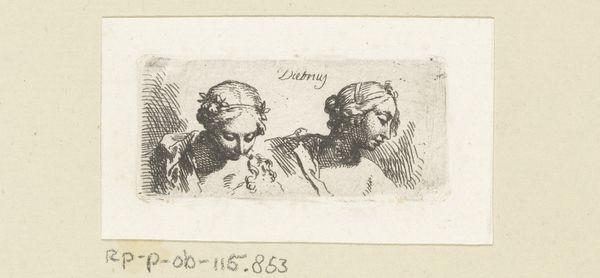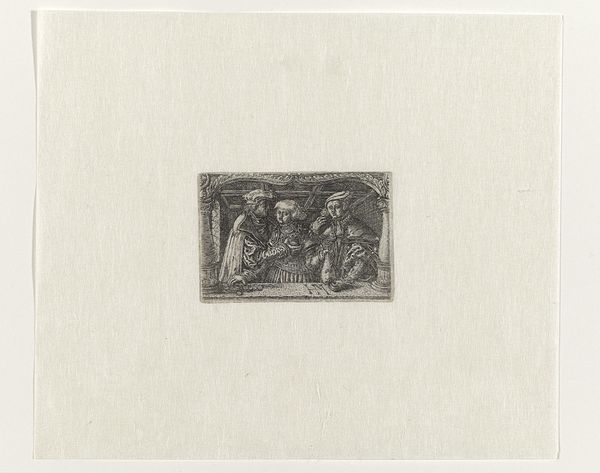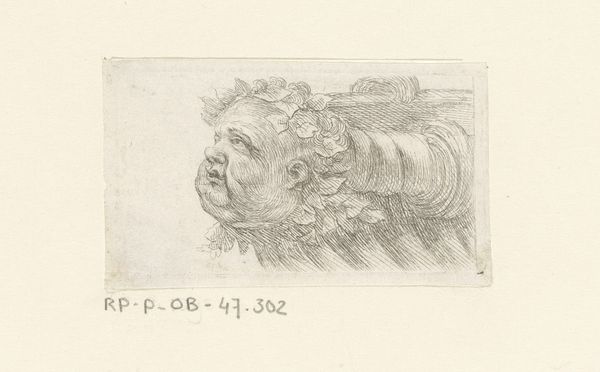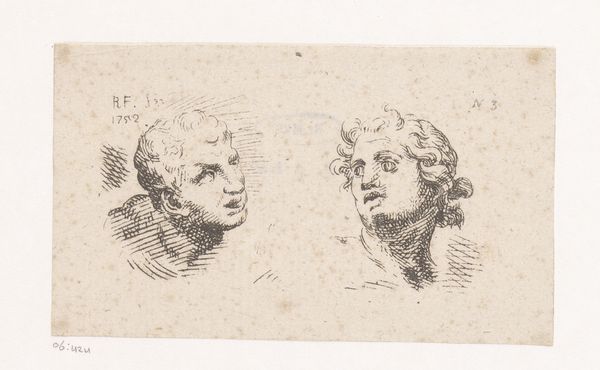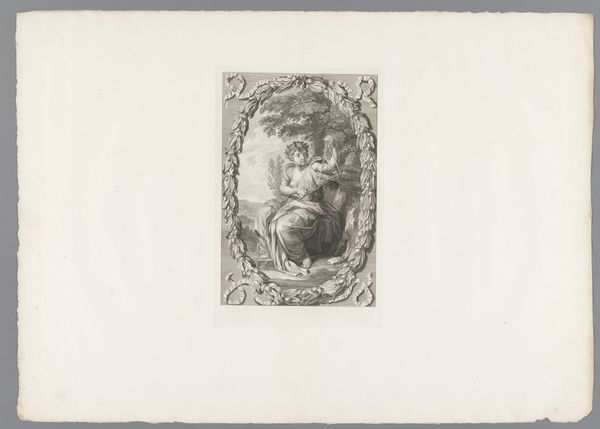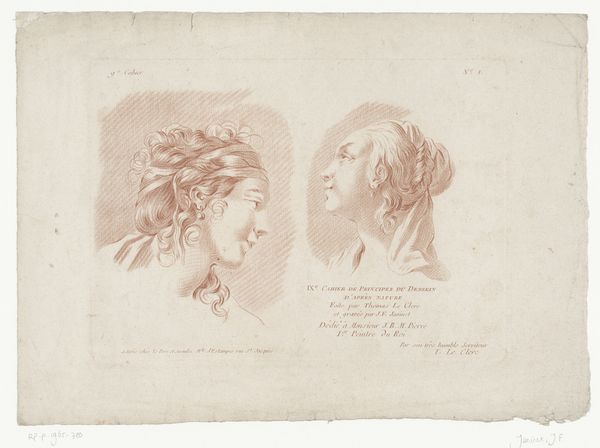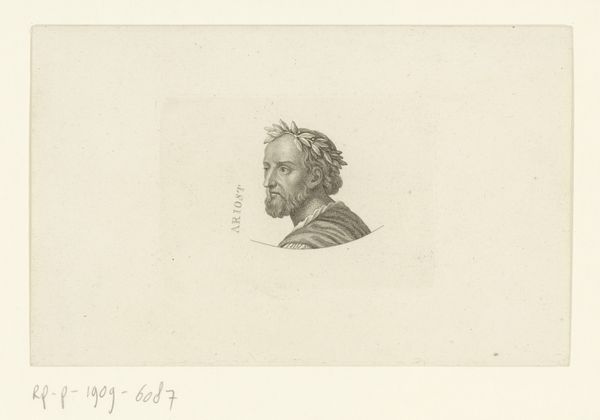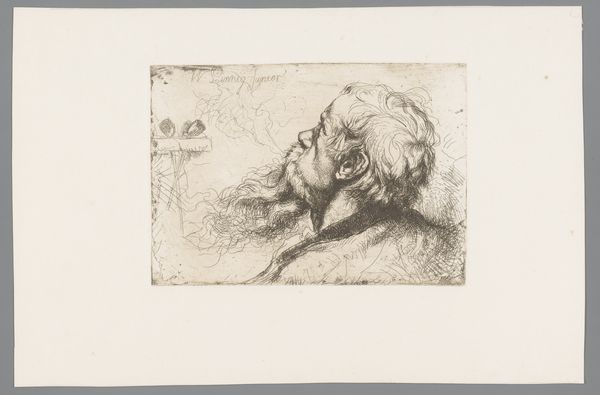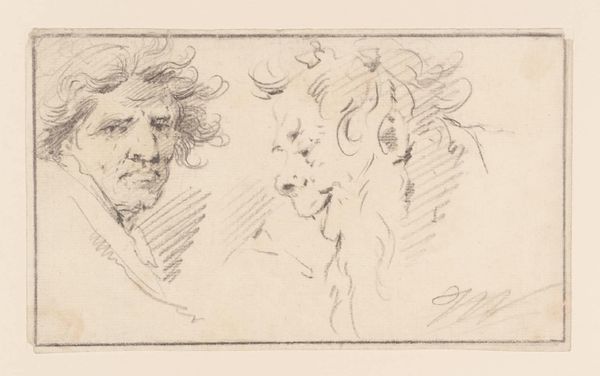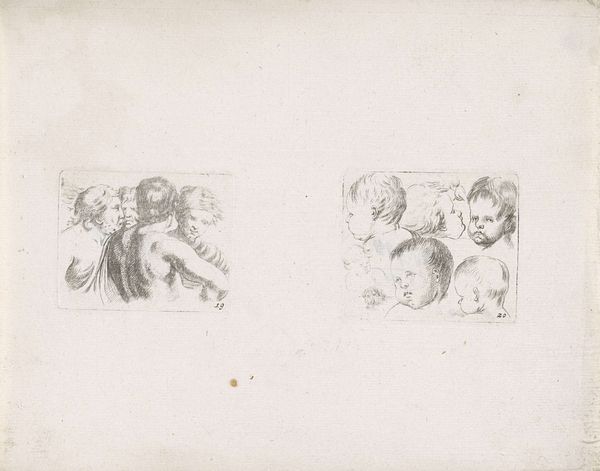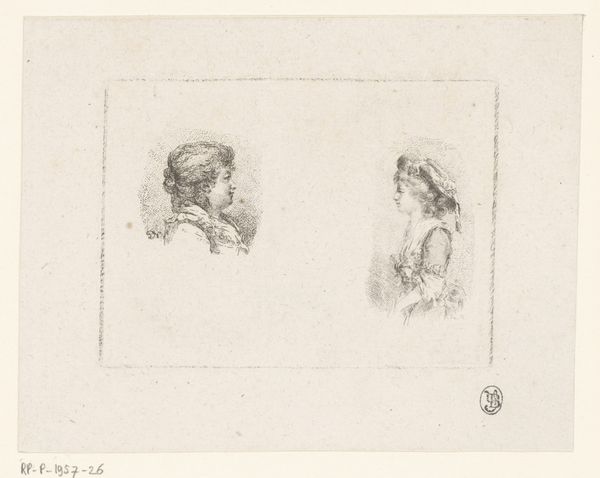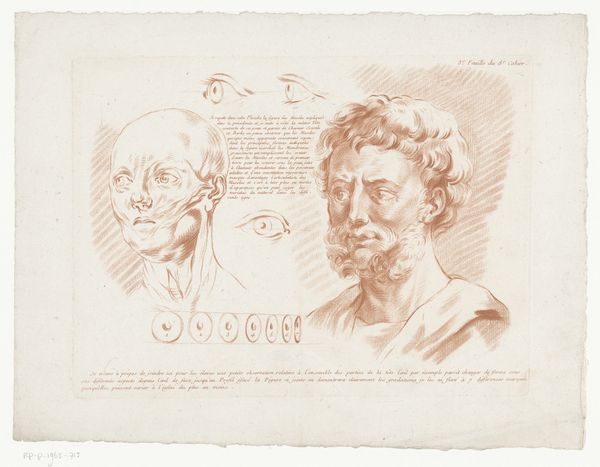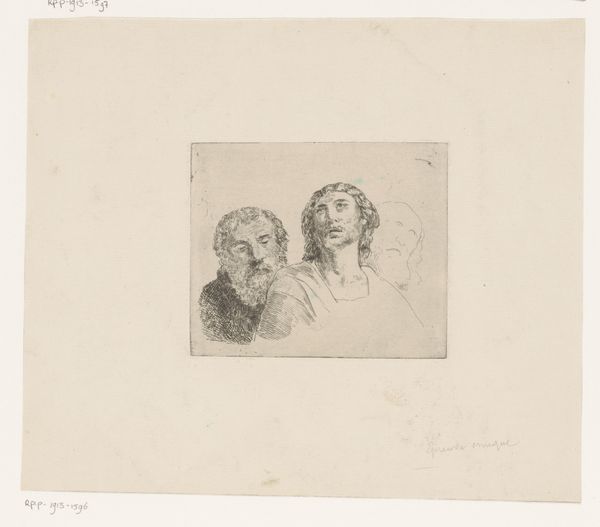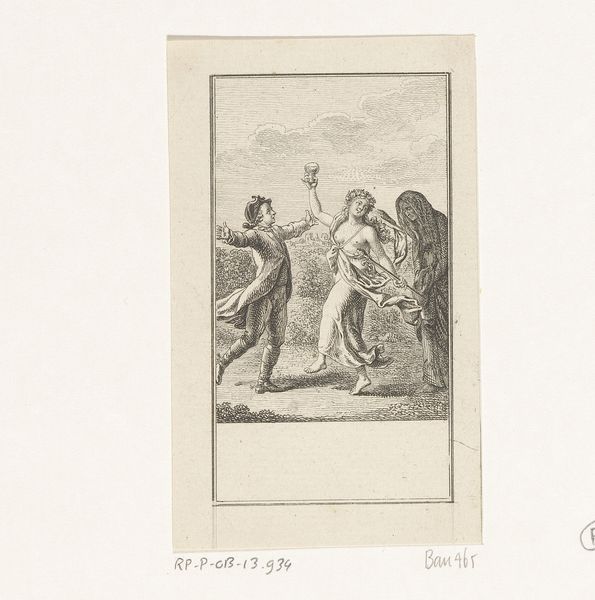
print, etching
#
portrait
#
baroque
# print
#
etching
Dimensions: height 27 mm, width 52 mm
Copyright: Rijks Museum: Open Domain
Editor: This etching from 1742, titled "Two upward looking heads" by Christian Wilhelm Ernst Dietrich, is striking. There’s a definite contrast between the figures; one appears more refined, almost ethereal, and the other seems quite rough, perhaps even world-weary. How do you interpret this pairing? Curator: That’s a keen observation. I see this as Dietrich engaging with prevailing social hierarchies. Etchings, due to their accessibility, were often vehicles for disseminating ideas about class and gender. The idealized woman and the rough man are representative of, respectively, idealized femininity and masculine labor, and how the privileged saw them in relation to one another in society. Editor: So you're saying the artwork plays into existing societal power dynamics? Curator: Precisely. Consider the gazes. Both are looking upwards, but what might they be looking at, and does the artist intend to convey different aspirations? In the 18th century, who controlled the "gaze", literally and figuratively, was very telling of who wielded power. Also, consider the artistic style; it's Baroque. Can we connect the dynamism and ornamentation of Baroque to displays of power and influence? Editor: That’s interesting. The upwards gaze could represent longing for something different, potentially social mobility… or perhaps even spiritual yearning within the context of the church. I never thought about how something like this could convey so much about social stratification. Curator: These seemingly simple portraits offer a glimpse into the complex social landscape of the 18th century, and remind us of the power dynamics often embedded in art. Editor: I agree. Looking closer at the print now, and considering your points, I’m viewing it in a completely new light. Curator: Wonderful! I’m glad that together we’ve opened new ways of analyzing this fascinating etching.
Comments
No comments
Be the first to comment and join the conversation on the ultimate creative platform.
